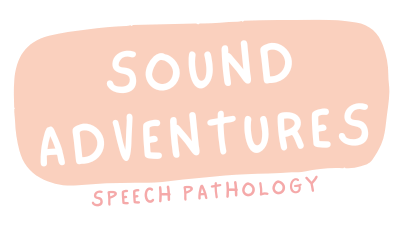Breakdown of the phonological awareness umbrella
When you think of early literacy skills, do you instantly think about learning ABC, reading, spelling and writing? Sure! But what If I told you there’s a series of stages that happen before kids start to develop these skills?
Here is a breakdown of phonological awareness - that is, an important set of skills for literacy development at the syllable, word and phoneme (sound unit) level. Phonological awareness involves the detection and manipulation of sound structures in spoken words, orally, before even talking about written text. It is the explicit teaching of phonological awareness, together with phonics (teaching of letter sound links) which is important for learning to read and spell.
This visual is the phonological awareness umbrella, adapted from a variety of sources (listed below) and put together in a way that makes most sense to me and probably to most people working with literacy (skill set difficulty of each raindrop ranges from left to right). Read on below to better grasp each of the elements under the umbrella.
Adapted from: Melanie Schuele and Donna Boudreau, ‘Phonological Awareness Intervention: Beyond the Basics’. Language Speech and Hearing Services in Schools 39(1), 2008, 3-20
Syllable level
Syllable awareness is a component under the phonological umbrella. That is, being able to break up words into ‘claps’ or ‘drumbeats’ such as ba - na - na (3 claps). This is a skill often developed after 3 years.
Here are some examples of syllable level practice you can integrate at home, in sessions and in the classroom.
👏 Segmenting syllables
👏 Completing words eg. “bana_”
👏 Deleting syllables
Here are some fun ways to target this with preschoolers:
👏clapping them out
🥁 drum beats in a group!
🚶♀️add actions/movement like big jumps, hops or stomps
🔔 ring bells or shakers
Why should we work on syllables?
Syllable counting assists with decoding skills later! So it’s worth practising this one.
Here’s a sweet activity you can find on my TPT store here that works on syllable level:
Word level
Word level awareness is a component under the phonological umbrella. That is, being able to play with words that sound similar and vary with one sound, or words that start with the same sound.
Here are some examples of word level practice you can integrate at home, in sessions and in the classroom.
👂 Do these words rhyme? Identifying
👂 Coming up with rhymes “Tell me words that rhyme with bell”
👂Alliteration eg. “The slippery snake said sssss!”
Here are some fun ways to target this with preschoolers and foundation level students:
📖 Through book reading
🎶 Rhyme and songs!
🚶♀️Adding actions/movement
💭 What are some other fun ways you can target rhyme and alliteration? Let me know your ideas below!
PS. While rhyming is important, research tells us it’s best to not focus on it for too long if you have a child who just can’t do it, as it’s not the strongest indicator for later literacy mastery. It can be really tricky for some to hear words that rhyme and it is worth practicing, just not dwelling on, as there are heaps of other key areas under the phonological awareness umbrella you can move on to!
Phoneme level
Phonemic awareness is a key component under the phonological umbrella. It is the most important component for learning to read and spell and involves the identifying, blending, segmenting and manipulation of sounds in spoken words.
Here are some examples of phoneme level tasks to target at home, in the classroom and in sessions:
👂 Onset-rime awareness and manipulation eg. changing the first sound or consonant blend before the vowel b-at, m-at, sp-at
👂 Matching words with first sound, final and middle
👂Identifying first, final and middle sounds
👂Blending sounds “m...oo...n”
👂Segmenting sounds - how many sounds in this word?
👂Phoneme manipulation eg. dash, change the d to m.
👂Deletion of sound in a word ‘say it without the x.. What’s the new word?’
🚨 Blending, segmenting and sound manipulation skills are critical to reading mastery
You can find my full activity bundle to work on all of these areas on my TPT store.
Want some free sound boards to use with your own pictures? Grab them here!
💭 What are some other fun activity ideas to work on these areas? Share them in the comments!


